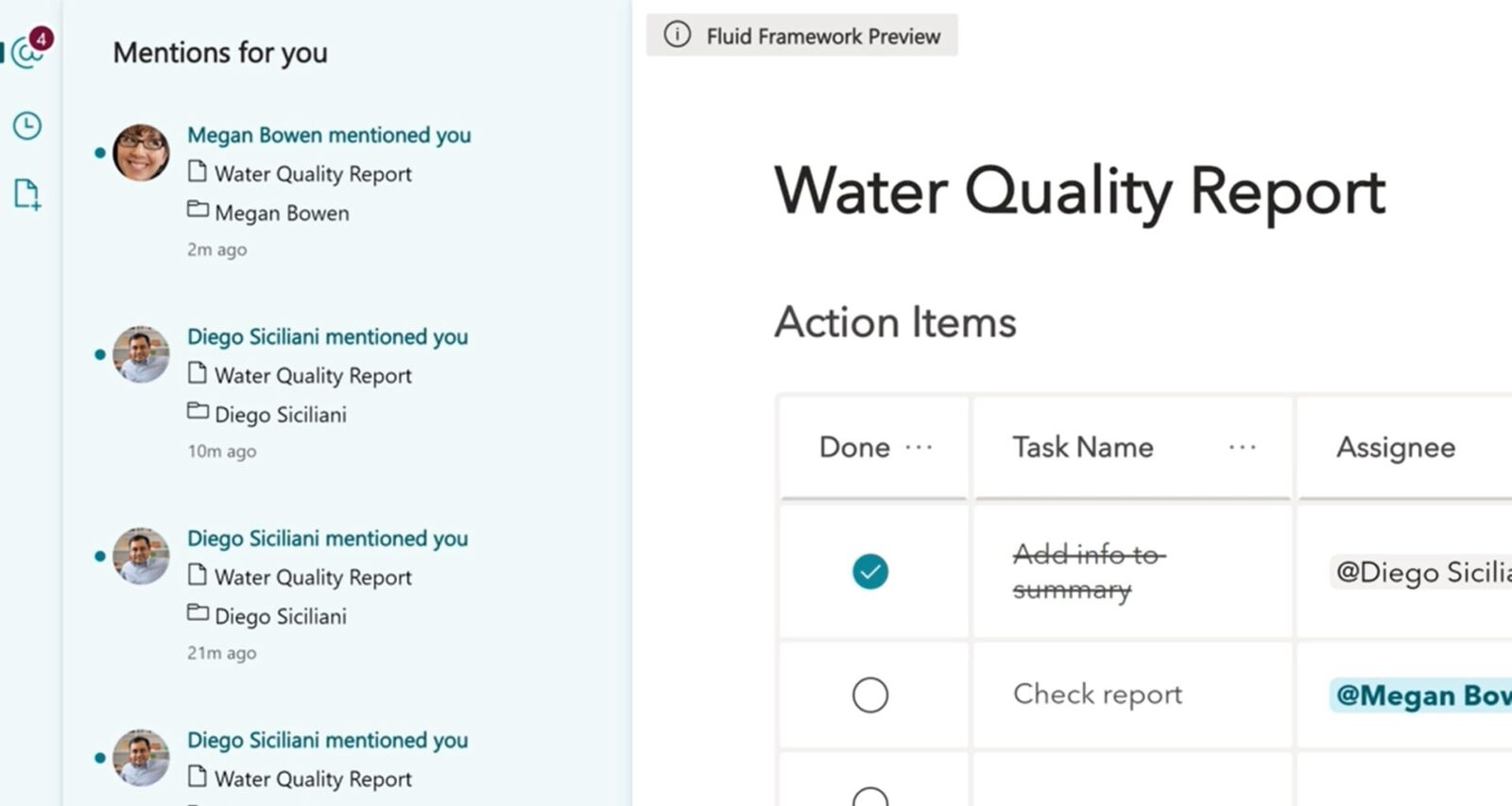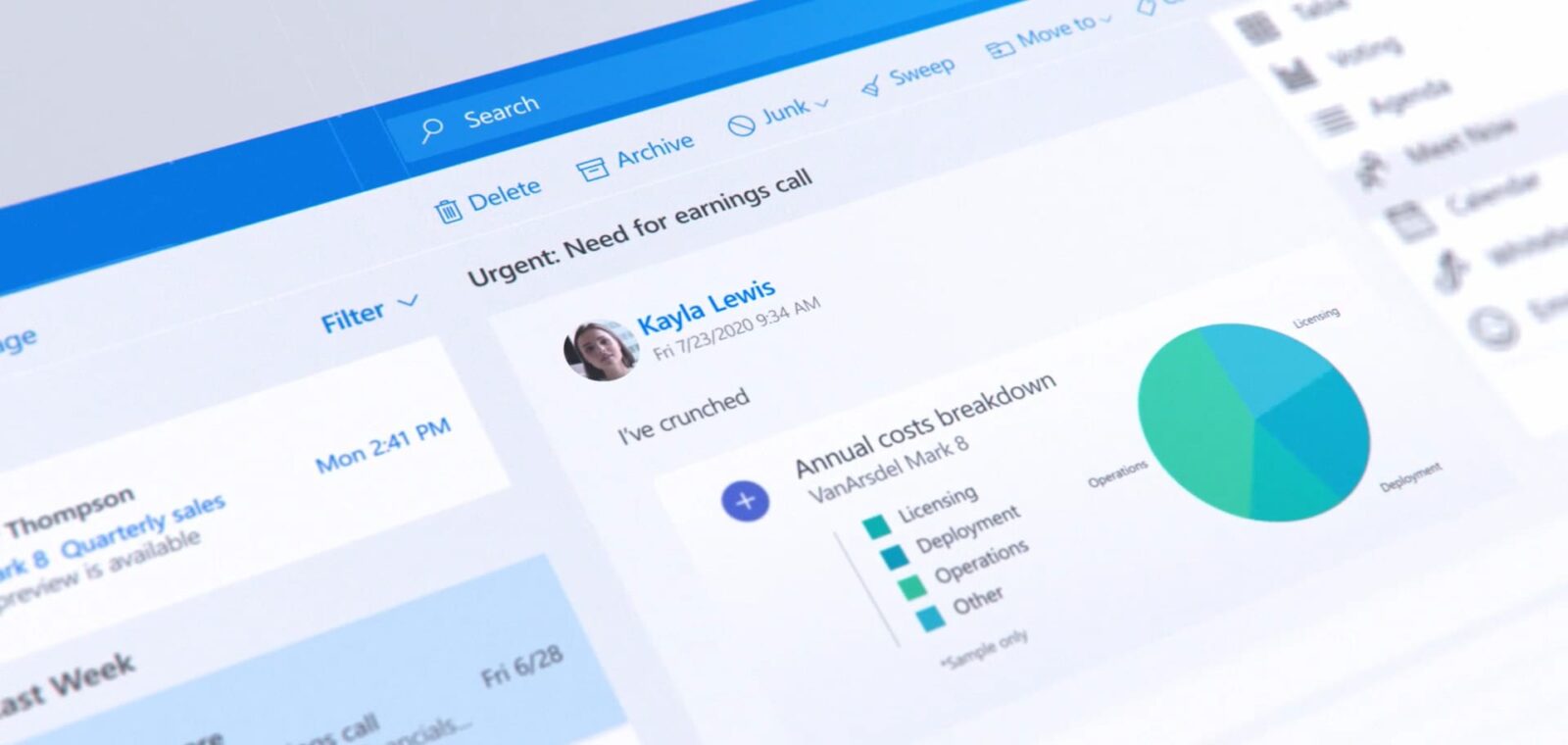Microsoft recently released a preview of its new tool called Fluid Framework, which is designed to help teams to collaborate on to-do lists, schedules, tables, lists, and more. This new web-based platform lets you work on documents with your team over the internet in real-time, just like Google Docs. However, the Fluid Framework also lets you use all Microsoft Office apps in one place, work directly from Outlook, and more. Here’s everything you need to know about Fluid Framework and other new tools Microsoft is releasing.
What Can You Do with Microsoft Fluid?
Collaborate with Teams

Just like Google Docs, Microsoft Fluid allows you to work with your team members over the internet. For example, you can share a document with certain team members, and they will be able to make changes to that document. You can also work on the same document at the same time, and you will be able to see any of the changes any of your team members make in real-time.
You can also tag other members of your team to add them to lists or schedules. Those team members will be alerted each time you add their name, so you can get things done even quicker.
Work on Many Types of Files on One Platform
Unlike Google Docs, Microsoft Fluid also makes it easy to use different types of content on one platform. For example, you can create a table of action plans, and then add a document or a list underneath it without switching between Excel and Word.
With Microsoft Fluid, you will be able to work on your calendars, documents, and tables without saving a file, opening a new file, or sharing different apps. They’re all on Microsoft Fluid for everyone to see and work on together.
Work from Outlook and Other Apps

Once you create a project with Microsoft Fluid, you can then embed it on other platforms, and you’ll still be able to edit it. Right now, you can only do this with Outlook and chat threads on Microsoft Teams. However, Microsoft claims that you will be able to do this with third-party email clients and chat apps soon.
Any changes that you and your co-workers make will be reflected in real-time in these chat threads or wherever they are placed. For example, let’s say you have a graph Microsoft Fluid component in a chat thread with your team. Then any member of your team can make changes to the graph, right in your chat thread. There is no need to jump to another app to make the edits.
How to Use Microsoft’s Fluid Framework
The Fluid Framework is still a work in progress. However, you can start using a preview version of the tool to see its potential for collaboration and productivity now. This tool is currently available to Microsoft Enterprise and education subscribers at the moment, but Microsoft says that the tools will soon be available to everyone.
More Upcoming Microsoft Updates
In addition to the Fluid Framework, Microsoft will also be adding new products and updating old ones in the coming months. Outlook users will be getting text prediction and the ability to reply to Yammer chat threads right from their inbox. You will also be able to use customizable templates, chatbot management, meeting scheduling, and more on Microsoft Teams.
Microsoft is also adding a new app called Lists. This app is designed to help you with organizing and keeping track of information that’s important for you and your business. However, this is not your typical list-making app. Microsoft’s new app lets you turn your lists into calendars or image galleries. It is customizable and can be a great tool for collaboration as well.
If you want to explore more productivity tools, take a look at our list of the best apps for working from home.


